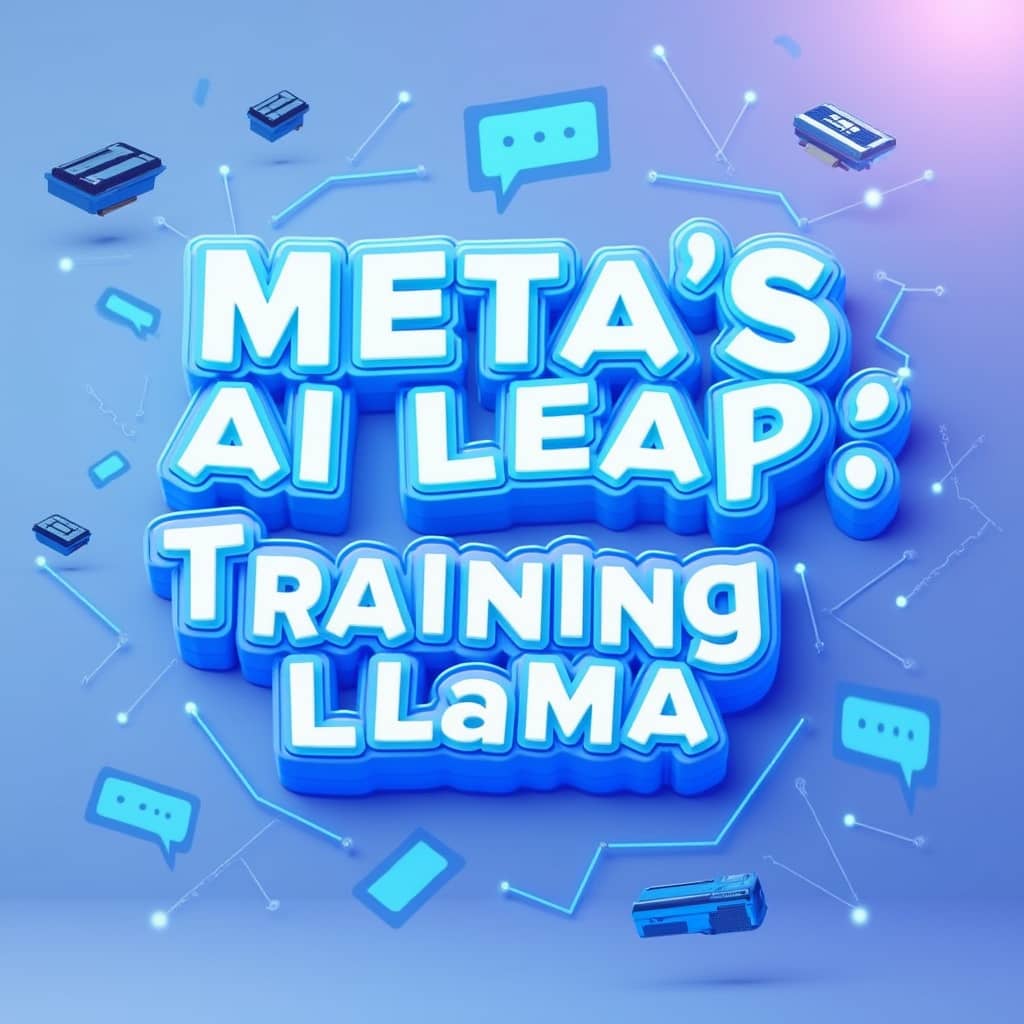Artificial intelligence (AI) is advancing at an extraordinary pace, transforming industries and reshaping our daily lives. One of the most exciting areas in AI development is natural language processing (NLP), where models learn to understand and generate human language. Recently, Meta achieved a major breakthrough by training four large language models, known as LLaMA, on the largest NVIDIA GPU cluster. This article explores the intricacies of Meta’s LLaMA models, the significance of NVIDIA’s GPU technology for AI training, and the potential implications for AI’s future.
Understanding Meta’s LLaMA Models
Meta, the parent company of Facebook, has been at the forefront of AI research, especially in developing large language models (LLMs) capable of handling complex language tasks. The LLaMA (Large Language Model Meta AI) models are designed to interpret and generate human language, making them invaluable for applications like chatbots, virtual assistants, and more.
LLaMA models are part of Meta’s broader initiative to democratize AI, ensuring these powerful tools are accessible across a wide range of applications. Their ultimate goal is to create AI that can understand context, respond coherently, and engage in meaningful conversations—qualities that are critical in today’s communication-driven digital world.
The Power of NVIDIA’s GPU Cluster
To train these advanced models, Meta leveraged the largest NVIDIA GPU cluster available. This immense computational resource is essential for scaling up AI training, as it enables the execution of complex calculations at unmatched speeds.
What Sets the NVIDIA GPU Cluster Apart?
NVIDIA’s GPUs are engineered to handle large datasets and perform rapid calculations, making them ideal for deep learning. By utilizing this technology, Meta was able to accelerate the training process and enhance the models’ performance. The NVIDIA GPU cluster’s size and capability allow for simultaneous training of multiple models, which is a game-changer for AI development timelines and efficiency.
The Training Process: Complexity at Scale
Training language models like LLaMA involves feeding them vast amounts of text data and using advanced algorithms to teach the model linguistic nuances. This process is computationally intense, requiring the model to adjust its parameters continuously based on the input data.
Key Steps in the Training Process
- Data Preparation: Large datasets containing diverse language samples are gathered and processed to prepare them for training.
- Model Initialization: The LLaMA models are initialized with specific architecture tailored to understand and generate language.
- Backpropagation Training: Using this technique, the model learns from its errors by adjusting parameters to minimize mistakes. The NVIDIA GPU cluster accelerates this process, drastically reducing training time.
- Fine-Tuning: After initial training, the models are refined for specific tasks, ensuring optimal performance in real-world applications.
The computational efficiency of the NVIDIA cluster enabled Meta to meet training milestones faster, resulting in models with improved accuracy and a better grasp of contextual language.
Achievements and Advancements
By training four LLaMA models with this unprecedented computational power, Meta achieved several important milestones:
Improved Accuracy and Speed
Initial testing suggests that these models outperform previous iterations in understanding and generating natural language. This efficiency is critical for real-time applications, such as customer service chatbots and AI-driven assistants.
Potential Applications Across Industries
The advancements with LLaMA models have promising applications in multiple fields, including:
- Healthcare: Improving patient interaction systems and assisting in diagnostics through natural language queries.
- Finance: Supporting more sophisticated transaction systems and enhancing customer service.
- Education: Offering personalized learning experiences through intelligent tutoring systems.
Looking Ahead: Future Directions in AI
The successful training of LLaMA models on NVIDIA’s GPU cluster underscores a key trend in AI: as models grow more complex, the infrastructure supporting them must evolve accordingly. This achievement sets the stage for even more advanced models that can expand AI’s impact across various industries.
Meta’s accomplishment signals its ongoing commitment to advancing AI, with potential breakthroughs on the horizon. As larger, more capable models emerge, the boundaries of AI continue to expand, offering transformative possibilities for society.
Conclusion: Join the Conversation
Meta’s success in training its LLaMA models on an unprecedented scale is an exciting development for NLP and the broader AI landscape. This breakthrough reflects how industry leaders are pushing the limits of technology to unlock AI’s potential.
What are your thoughts on the future of AI with these advancements? How do you see AI applications evolving in your field or daily life? Share your insights in the comments below, and let’s discuss this fascinating journey together!
